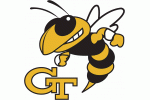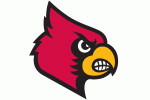In a season destined to be defined by a handful of historically impressive defensive performances by some of the nation's top teams, no one has been more impressive than Virginia. The Cavaliers will enter Saturday's game allowing just 50.8 ppg, the best average in the country. They are just the second team since the advent of the three-point line to hold an opponent to fewer than 30 points in a game on three separate occasions, a feat they achieved before the calendar flipped to February.
 All this comes one season after Tony Bennett's team rode the nation's best scoring defense to an outright ACC regular season championship, the ACC Tournament title, and a No. 1 seed in the big dance. Everyone expected UVA to take a monster step back this year after losing star guard Joe Harris and the ultra-athletic Akil Mitchell. Instead, somehow, the Hoos are even better.
All this comes one season after Tony Bennett's team rode the nation's best scoring defense to an outright ACC regular season championship, the ACC Tournament title, and a No. 1 seed in the big dance. Everyone expected UVA to take a monster step back this year after losing star guard Joe Harris and the ultra-athletic Akil Mitchell. Instead, somehow, the Hoos are even better.
Basically, there's a system in place at Virginia that pretty clearly works. It works really, really well.
If you've paid some attention to college basketball outside of Louisville at all this season, you've probably heard "Pack Line Defense" on at least one occasion. It's a system created by former UWGB/Wisconsin/Washington State coach Dick Bennett, which is now being utilized remarkably well by his son, Tony.
Let's talk about it.
What is the "Pack-Line"
This seems like the most reasonable place to start.
The Pack-Line is, quite literally, a line.
/cdn0.vox-cdn.com/uploads/chorus_asset/file/3381422/pack_20line_20_smaller_.0.jpg)
Teams like Virginia and Xavier will practice with this line taped on their court. It essentially exists as an electric fence for every defender besides the one whose man has the ball. Your guy doesn't have the ball? You're not outside the Pack Line.
Ok, so what's the point?
Congestion in the "packed" middle which prevents easy baskets and forces opponents to win games by making lower percentage challenged outside shots.
The basic tenet here is that there should be help in place before a defensive breakdown even occurs. As Rick Pitino alluded to during his pre-Virginia press conference, although all five defenders in this system technically have a man, all five are essentially playing the ball. In a day and age where most defensive philosophies center around the notion of forcing ballhandlers (whether they're in pick-and-roll or isolation situations) to the sidelines or the baseline, the Pack-Line funnels everything to the middle, because that's where all the help is.
Two or three decades ago, offenses like the Indiana Motion or the UCLA High-Post Offense that Denny Crum utilized throughout his tenure at Louisville, were all the rage. The college game has now evolved to a point where the offenses of so many teams are predicated on getting the ball up the court in a hurry to score points, or spreading defenses out in halfcourt sets and attempting to kill them with penetration. The Pack-Line aims to take away both of those things.
The Pack-Line's 5 Basic Principles
1. Be committed to transition defense
Despite being one of the biggest teams in the country (the 15th-tallest according to Ken Pomeroy), Virginia averages just 10.8 offensive rebounds per game, good for 184th in Division-I. Why? Because they are far more concerned about getting back on defense. The Cavaliers are so confident in their ability to keep teams from scoring in the halfcourt that they will sacrifice the potential for getting cheap second chance points around the basket in favor of being 100 percent that they're not going to allow an easy transition basket on the other end of the floor.
If you see a Cavalier not sprinting down to the other end of the court after the conclusion of an offensive possession on Saturday, he's a player who's about to come out of the game.
2. Keep the ball out of the post
The highest field goal percentage offenses are the ones that get the bulk of their production from post players. The highest field goal percentage defenses are the ones that force their opponents to consistently take challenged outside shots. In a second, we'll talk about how UVA does this, how they'll try to defend Montrezl Harrell, and how they managed to force potential national Player of the Year Jahlil Okafor into a season-high five turnovers and a season-low 10 points.
3. Ball pressure
The defense isn't set up to create steals or force turnovers, but Virginia wants the opposing ballhandler to feel uncomfortable. Without ball pressure, it's far easier for opposing offenses to make the passes necessary to expose the holes in the pack-line defense.
Significant ball pressure often results in a defender getting beat, and Bennett's okay with that, so long as the defender isn't getting beat by a guy going directly North and South. If Chris Jones is going to get a step or two on his man, the defender had better of at least made him go two or three steps to his right or left so that help will be right there to crush any thoughts Jones may have had about having a clear path to the basket. If a defender presses up on a Cardinal ballhandler and that Card is able to beat him by simply making a move straight to the basket, again, that's a Cavalier who is about to head to the bench.
4. Early help on dribble penetration
If there's one single element of the defense that's more important than the others, it's this one. The staple of all great defenses is that they recover appropriately when they've been breached. The Pack-Line is already set up with the anticipation of a breach occurring. Every player on the court has an eye on the ball and is ready for the man putting pressure on the ball to be beaten. The instant it happens, someone is there to cut off the penetration. Awareness and proper positioning are paramount here. It doesn't work if all five players aren't working together as a single, constantly moving unit.
5. Contest every shot
With so much sliding and helping taking place, it stands to reason that there are going to be guys who are momentarily left open along the perimeter. Virginia is cool with this, because they close out on shooters and contest shots better than any other team in the country. The second the pass is made to the player on the perimeter, the UVA defender will sprint at the man while staying under control, chop their feet as they approach to avoid an easy pump fake/drive scenario, and then contest the shot with their hands up. "Sprint, slide, high hands." If the guy makes the contested shot, you tip your cap and make them prove they can do it again on the next trip.
How it Looks
Here are a couple of examples of how this whole thing looks in real time:
Interior defense and how UVA will defend Trez
The Pack-Line will make it look as though it's inviting you to throw the ball into the low post, and then it will just as quickly take that option away.
The biggest thing UVA will do to deny the post is put pressure on the ballhandler. Since they force everything to the middle, they're not going to let U of L players feed Trez with entry passes off their right side near the baseline, they're going to force them to either try and go over the top or make that much-more-difficult bounce pass around the ball defender's right shoulder.
/cdn0.vox-cdn.com/uploads/chorus_asset/file/3381838/Screen_Shot_2015-02-06_at_1.23.03_PM.0.png)
When it comes to defending Trez (or Mangok or Chinanu), UVA defenders are never gong to front them because they know there's no help behind them. Instead, once the ball gets below the free-throw line or the free-throw line extended and a Cardinal big man attempts to post up, the UVA defender will have his chin at the player's shoulder and his right arm extended to deny the pass.
/cdn0.vox-cdn.com/uploads/chorus_asset/file/3381860/Screen_Shot_2015-02-06_at_1.26.17_PM.0.png)
Virginia's big men are really physical with their lower body, which is smart, because how many fouls do you see called where hands or arms aren't involved? Next to none. The Cavalier interior defenders will make sure that Trez and company aren't able to catch the ball right around the basket by forcing them away from the paint with their physicality.
Once a successful entry pass is made, the UVA defender will immediately pop back around the offensive player and get their hands up in order to prevent an easy turn to the baseline or a face-up jumper. The defender will then try and force Trez (or whomever) away from the sideline and towards the middle of the lane. The instant Trez (or whomever) picks up his dribble, the defender will "wall up" and force either a kick out or a contested shot.
/cdn0.vox-cdn.com/uploads/chorus_asset/file/3381888/Screen_Shot_2015-02-06_at_1.37.15_PM.0.png)
Bennett will live with Harrell taking this kind of field goal attempt.
Against Duke, Virginia doubled Jahlil Okafor nearly every time he caught the ball in the post, a trend Trez can also expect a lot of.
/cdn0.vox-cdn.com/uploads/chorus_asset/file/3381900/Screen_Shot_2015-02-06_at_1.39.54_PM.0.png)
Instead of attempting to make an admittedly difficult pass to Amile Jefferson here, Okafor attempted to spin to the baseline (which is being effectively taken away per the Pack-Line principles) and traveled, one of his five turnovers. Given the struggles that Louisville's post players have had passing to one another (and catching), it's a safe bet that Virginia will make the Cards prove they're capable of taking advantage of a momentary opening like the one in the image above.
So how does Louisville score enough points to win this game?
Virginia's entire M.O. is forcing challenged shots from the outside. Even if the Cards execute perfectly in the halfcourt, even if they take advantage of a few breakdowns around the rim, and even if they are able to squeeze out some cheap points in transition or off of turnovers ... they're going to have to make some outside shots. It's a scary thought, but it's hard to see any way around it.
That said, there are at least a few causes for optimism from the Hoos' only loss of the season.
First, Duke had some success in transition early on in last Saturday's game. UVA adjusted -- as you might expect from the No. 5 transition defense team in the country -- but those points were still scored, and every basket is going to be huge on Saturday.
Second, the Devils did show that Montrezl Harrell (or Mangok or Nanu) might be able to have some success hanging around the baseline if Chris Jones and Terry Rozier are able to set him up effectively.
/cdn0.vox-cdn.com/uploads/chorus_asset/file/3381930/Screen_Shot_2015-02-06_at_1.52.22_PM.0.png)
My hunch is that UVA won't allow Trez to be in this position on Saturday, so it may have to be the 5 who's converting these opportunities if they're present.
The last thing Duke did was get some decent looks late by moving the ball without hesitation. There's not really time to do that much thinking against the Pack-Line because the openings are so fleeting. If you hesitate half a second, the pass is going to wind up being either a turnover or resulting in a low percentage challenged shot.
For all the things Duke did well against Virginia ... it still won the game with a pair of deep, challenged threes in the final minute ... and it still scored just 69 points.
The game plan for Louisville has to be this: get some points off turnovers (I know pressing is an issue with the bench playing so few minutes right now, but there might not be a choice here), beat the defender so badly that help can't come in time and create easy chances for Trez or the center around the rim, and pray that at least one or two players are having good shooting nights.




















/cdn0.vox-cdn.com/uploads/chorus_asset/file/3381428/packlineMobileA.0.GIF)